Figure 8.6 shows a capacitor made of two circular plates each of radius 12 cm, and separated by 5.0 cm. The capacitor is being charged by an external source (not shown in the figure). The charging current is constant and equal to 0.15A. Calculate the capacitance and the rate of change of potential difference between the plates. :
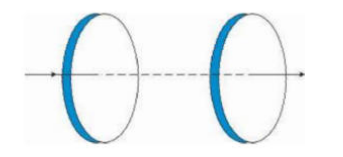 Solution in Punjabi
Solution in Punjabi
Step by step video & image solution for Figure 8.6 shows a capacitor made of two circular plates each of radius 12 cm, and separated by 5.0 cm. The capacitor is being charged by an external source (not shown in the figure). The charging current is constant and equal to 0.15A. Calculate the capacitance and the rate of change of potential difference between the plates. : by Physics experts to help you in doubts & scoring excellent marks in Class 12 exams.
Topper's Solved these Questions
Similar Questions
Predict the direction of induced current in the situations described by the following Fig:
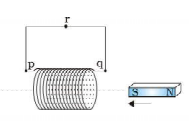 05:10View Solution
05:10View SolutionTwo charges 5×10−8C and −3×10−8C are located 16 cm apart. At what point(s) on the line joining the two charges is the electric potential zero? Take the potential at infinity to be zero.
02:18View SolutionA parallel plate capacitor made of two circular plates each of radius 10 cm and separated by 4.0mm. The capacitor is being charged by an external source. The charging current is constant and equal to 0.10A. Calculate (i) the capacitance (ii) the rate of change of potential difference between the plates (iii) the displacement current.
02:19View SolutionA capacitor made of two circular plates each of radius 12 cm and separated by 5 mm. The capacitor is being charged by an external source. The charging current is constant and equal to 0.15 A. The capacitance of the parallel plate capacitor is
View SolutionThe figure shows a capacitor made of two circular plates each of radius 12 cm, and separated by 5.0 cm . The capacitor is beging charged by an external source (not shown in the figure. ) The charing is constant and equal to 0.15 A Calculate the capacitance and the rate of charge of potential difference between the plates.
05:13View SolutionA capacitor is made of two circular plates each of radius 12 cm, and separated by 5.0 cm. The capacitor is being charged by an external source. The charging current is constant and equal to 0.15 A.
(a) Calculate the capacitance and rate of change of potential difference between the plates.03:15View SolutionA capacitor is made of two circular plates each of radius 12 cm, and separated by 5.0 cm. The capacitor is being charged by an external source. The charging current is constant and equal to 0.15 A.
Obtain the displacement current across the plates.View SolutionFigure shows a capacitor made of two circular plates each of radius 12 cm and separated by 5.0 cm. The capacitor is being charged by an external source (not shown in the figure). The charging current is constant and equal to 0.15 A.
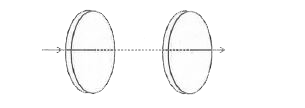
a. Calculate the capacitance and the rate of change of potential difference between the plates.
b. Obtain the displacement current across the plates.
c. Is Kirchhoff's first rule (junction rule) valid at each plate of the capacitor ?07:51View SolutionFigure 8.6 shows a capacitor made of two circular plates each of radius 12 cm, and separated by 5.0 cm. The capacitor is being charged by an external source (not shown in the figure). The charging current is constant and equal to 0.15A.
(a) Calculate the capacitance and the rate of change of potential difference between the plates.
(b) Obtain the displacement current across the plates.
(c) Is Kirchhoff’s first rule (junction rule) valid at each plate of the capacitor? Explain.
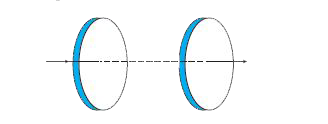 06:10View Solution
06:10View SolutionFigure 8.6 shows a capacitor made of two circular plates each of radius 12 cm, and separated by 5.0 cm. The capacitor is being charged by an external source (not shown in the figure). The charging current is constant and equal to 0.15A.
(a) Calculate the capacitance and the rate of change of potential difference between the plates.
(b) Obtain the displacement current across the plates.
(c) Is Kirchhoff’s first rule (junction rule) valid at each plate of the capacitor? Explain.
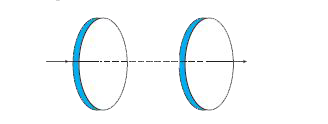 03:35View Solution
03:35View SolutionFigure 8.6 shows a capacitor made of two circular plates each of radius 12 cm, and separated by 5.0 cm. The capacitor is being charged by an external source (not shown in the figure). The charging current is constant and equal to 0.15A.
(a) Calculate the capacitance and the rate of change of potential difference between the plates.
(b) Obtain the displacement current across the plates.
(c) Is Kirchhoff’s first rule (junction rule) valid at each plate of the capacitor? Explain.
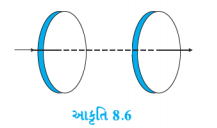 03:44View Solution
03:44View SolutionFigure shows a capacitor made of two circular plates each of radius 12 cm, and separated by 5.0 cm. The capacitor is being charged by an external source (not shown in the figure). The charging current is constant and equal to 0.15 A. Calculate the capacitance and the rate of change of potential difference between the plates.
02:19View SolutionFigure shows a capacitor made of two circular plates each of radius 12 cm, and separated by 5.0 cm. The capacitor is being charged by an external source (not shown in the figure). The charging current is constant and equal to 0.15 A.
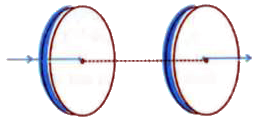
Obtain the displacement current across the plates.02:06View SolutionFigure shows a capacitor made of two circular plates each of radius 12 cm, and separated by 5.0 cm. The capacitor is being charged by an external source (not shown in the figure). The charging current is constant and equal to 0.15 A.
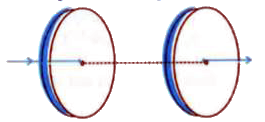
Is Kirchhoff's first rule (junction rule) valid at each plate of the capacitor ? Explain.View SolutionA capacitor made of two circular plates each of radius 12 cm and separated by 5 cm. The capacitor is being charged by an external source. The charging current is constant and equal to 0.15 A. The capacitance of the parallel plate capacitor is
08:17View Solution

